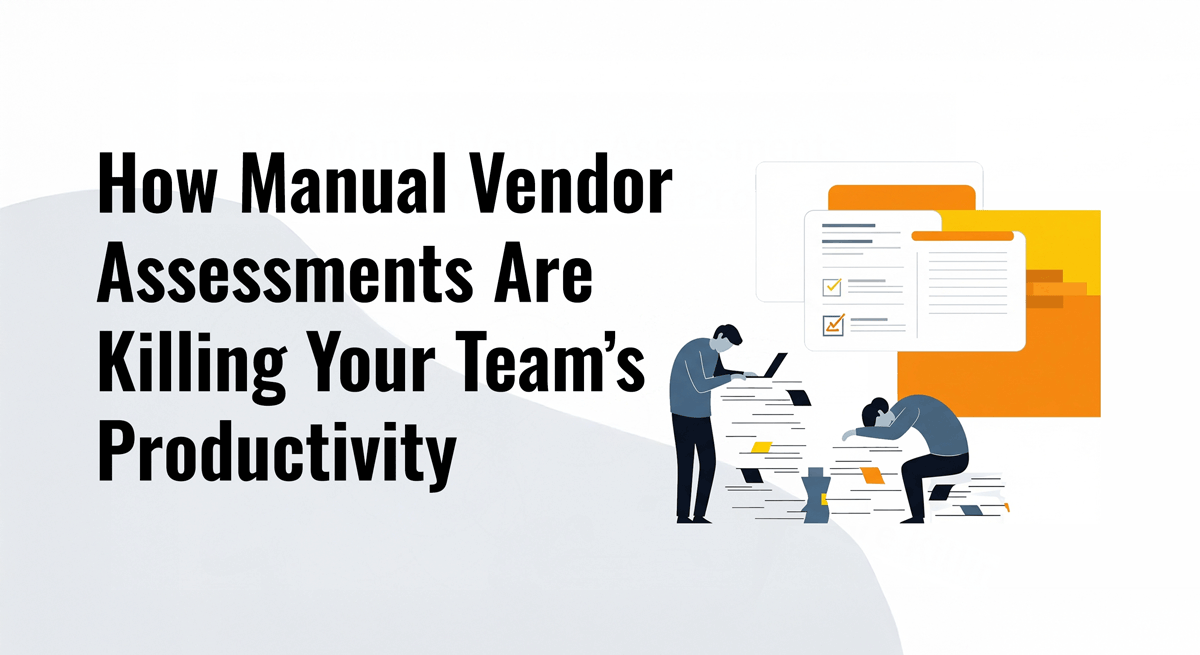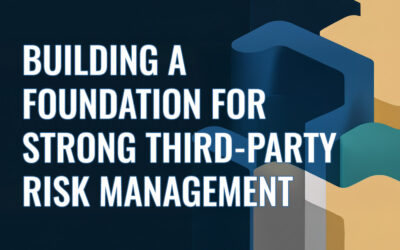Manually managing vendor assessments is doable when you only have a handful of third-party relationships. But as you start to scale, the task becomes a significant time investment that invariably kills your team’s productivity. What used to take a few hours now requires over a week — and that’s if you work on nothing but assessments.
The truth is, handing vendor assessments manually harms productivity in several measurable ways.
Let’s do the math.
The True Cost of Manual Assessments
If you manage 300 vendors, that’s 300 instances of outreaches, follow-ups, and document reviews. Let’s be conservative and say that’s 15 minutes per vendor.
That’s nearly 75 hours — almost two full work weeks spent on a task that should be automated.
And when you factor in clarification emails, review cycles, internal approvals, and nudging non-responsive vendors, the time per vendor quickly goes beyond 15 minutes, and what looks like small administrative overhead quickly drains your team.
The Mental Toll of Context Switching
Beyond lost time, teams lose even more efficiency when they’re forced to constantly switch tasks.
One minute, you’re reviewing a vendor’s infosec policy. The next, you’re in Slack fielding a question from legal. Then you’re knee-deep in a half-completed spreadsheet that somehow missed the data retention policy altogether.
The cognitive burden of constantly shifting tasks isn’t just frustrating — task switching can harm productivity by as much as 40%. Every interruption forces the brain to reset, directly impacting efficiency, accuracy, and energy.
The Deprioritization of Strategic Initiatives
Manual assessment workflows are pulling your team members away from high-impact work. After all, they have much more on their plates than just vendor assessments; they’re handling audits, managing incidents, and supporting procurement. So while working on assessments may make teams feel busy, it comes at the expense of high-impact tasks.
What strategic initiatives are being sidelined while you chase down SOC 2 reports and nag vendors for their questionnaire responses? How much is being missed while your team buries themselves in tedious busywork? As they spend hours upon hours sorting through manual assessments, they’re inevitably letting strategy take a backseat.
How Manual Processes Create Vendor Security Blind Spots
When your team spends so much time on manual workflows, they can easily miss critical changes in a vendor’s security posture. An unexpected employee departure, a silent data breach, or a subtle infrastructure update can slip through unnoticed, allowing attackers to turn trusted partners into hidden vulnerabilities.
These compromised vendors can operate undetected for weeks or even months. By the time you discover the problem, the damage has often already spread, and remediation becomes costly and urgent.
Fixing Inefficiencies by Automating Vendor Risk Management
Automation eliminates the repetitive and manual steps that create bottlenecks and vulnerabilities in vendor risk programs. So instead of managing each assessment through email, spreadsheets, and disconnected workflows, teams can use AI-powered systems that handle the process from start to finish.
For example, ProcessBolt provides prebuilt assessments based on industry standards like SIG, NIST, and ISO. Teams can deploy these frameworks immediately and adapt them as needed, and the platform will score responses automatically, highlighting exceptions and organizing findings for review.
ProcessBolt also manages remediation. When vendors fall short on requirements, the platform triggers action plans and tracks completion, removing the need for manual follow-ups and status checks. Teams receive alerts only when manual review or input is required, keeping their attention focused on high-value work instead of administrative tasks.
Automation through platforms like ProcessBolt allow vendor risk processes to move faster, scale more easily, and produce cleaner audit trails. Teams gain visibility across all vendors without expanding headcount or increasing overhead, and the organization becomes more responsive to emerging threats and better equipped to maintain compliance.
Reclaim Time and Reduce Risk with VRM Automation
If your team is still managing vendor assessments in spreadsheets, it’s time for a change. It’s not just about saving 75 hours of work; it’s about reclaiming your team’s capacity and protecting your organization more effectively.
With automation built into every step, ProcessBolt streamlines vendor risk assessments from intake to remediation. The platform delivers faster turnaround, stronger oversight, and fewer gaps — helping you build a robust VRM program without sacrificing quality.




